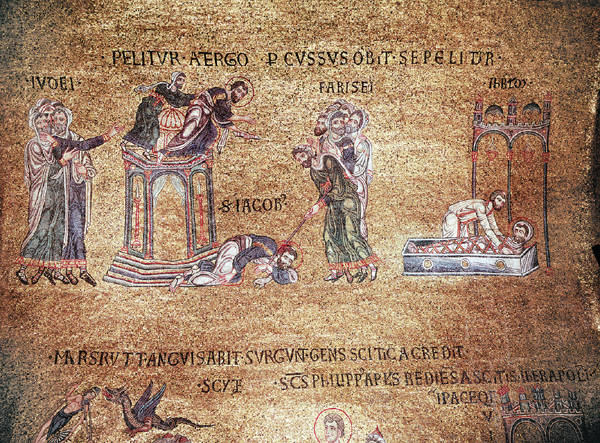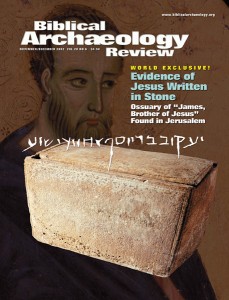The Last Days of James
Sidebar to: Burial Box of James the Brother of Jesus

An extended description of the death of James, brother of Jesus, appears in the Ecclesiastical History of the church Father Eusebius of Caesarea (c. 260–339). Eusebius quotes a passage from a now-lost work by Hegesippus, a Christian writer who lived in Palestine in the second century. Hegesippus said that James was holy “from his mother’s womb,” never drinking wine, eating meat or bathing himself and kneeling in prayer so often “that his knees became hard like those of a camel.” He was therefore called “the Just” and, in Greek, Oblias, “Bulwark of the People.”
Following the crucifixion of Jesus, James became leader of the early Christians in Jerusalem. Preaching that Jesus was the Christ, or Messiah, he won many converts, including some from the ruling classes. According to Hegesippus, his preaching alarmed the scribes and Pharisees, who ordered him to stand at the Jerusalem Temple before a large crowd and retract his statements. James went to the top of the Temple, but instead of recanting, he confirmed that Jesus was indeed the Christ. Then, writes Hegesippus,
They [the scribes and the Pharisees] went up and threw down the just man, and said to each other, “Let us stone James the Just.” And they began to stone him, for he was not killed by the fall, but he knelt down and said, “I entreat thee, Lord God our Father, forgive them, for they know not what they do.” And one of them, who was a fuller, took the club with which he beat out clothes and struck the just man on the head.
Already a library member? Log in here.
Institution user? Log in with your IP address.

